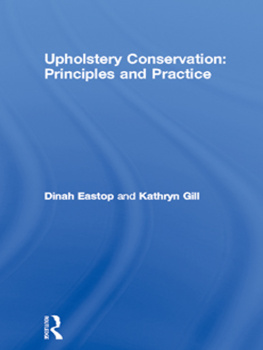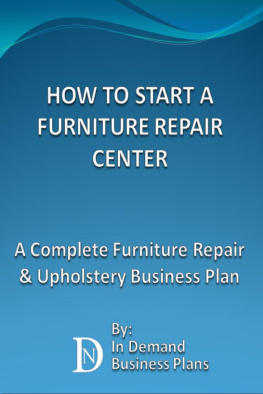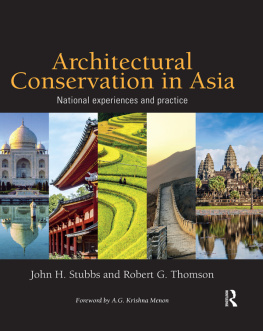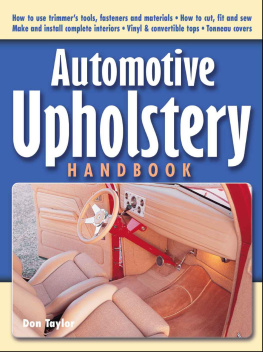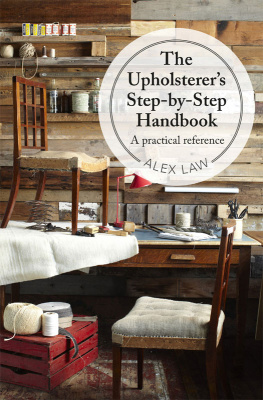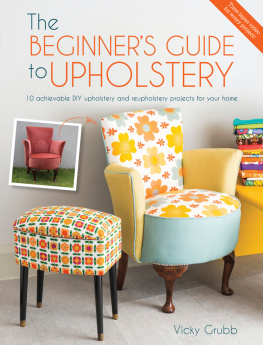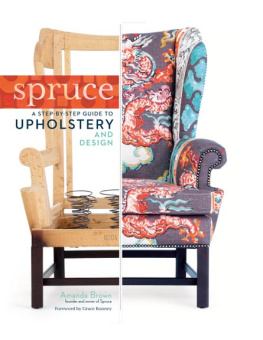Acknowledgements
This book is like a top cover stretched over a complex understructure. It is supported by traditional upholstery practice, historical and technical research, innovation and international collaboration. We would like to thank everyone who contributed to the book and supported its creation.
Our greatest debt is to the contributors, who responded to our invitation with enthusiasm, and to our editorial queries with great patience and sensitivity to deadlines. We were pleased when Karen Finch, to whom we dedicate this book, offered her thoughtful perspective, published as the Dedicatees Preface. We felt especially honoured when Peter Thornton accepted our invitation to write the Foreword.
Custodians of the many collections represented here could not have been more helpful. We thank colleagues at the Brooklyn Museum of Art, New York, USA; the Cleveland Museum of Art, Cleveland, USA; the Detroit Institute of Arts, Detroit, USA; English Heritage, Brodsworth Hall, South Yorkshire, UK; the Geffrye Museum, London, UK; Houghton Hall, Norfolk, UK; the Metropolitan Museum of Art, New York, USA; Raby Castle, County Durham, UK; Victoria & Albert Museum, London, UK; William Morris Gallery, Walthamstow, London, UK; Winchester Cathedral, Winchester, UK.
We acknowledge the support provided by the University of Southampton and by a research grant from the British Academy.
We also acknowledge the support of colleagues at the Textile Conservation Centre, University of Southampton, notably Nell Hoare, Mary Brooks and Amber Rowe, who were encouraging in both word and deed. The final stages of assembling the text and illustrations would have been much harder without the help of Vivienne Martin, Ann Morrice, Sylvie Tye and Mike Halliwell.
We benefited from the interdisciplinary collaboration manifested at the one day forum: The Conservation and Restoration of Upholstered Furniture: Reviewing the Issues held at West Dean in December 1998. We thank particularly David Leigh, Pat Jackson and Norbert Gutowski of West Dean.
We would also like to acknowledge the advice given by Andrew Oddy, as Series Editor, and staff at Butterworth-Heinemann. We thank Bob Smith and David Goldberg for their support, and William Smith for his unflagging enthusiasm for The Adventures of the Wishing Chair (Blyton, 1937).
Appendix I
Documenting upholstery: a guide for practitioners
Sherry Doyal
1.1 Introduction
Why should we engage in the analysis and documentation of upholstered objects? An important reason is that so much information on the history and technology of upholstery has already been lost. This information is especially important when the survival of the object cannot be assured (for instance objects in private use or objects made up of unstable materials). Upholstery is rather like archaeology in this respect; when a layer is removed or disturbed it is never quite the same.
Information collected during examination and treatment may be used to interpret the object or other similar objects. These interpretations exchanged and shared by conservators/restorers, curator/collectors, students and the public increase interest in the subject. This increased interest may accelerate the rate at which upholstery is preserved.
As a conservator one can aim for the ideal, that is preserving both the object and the information it contains; indeed the ethics of the profession insist on this. However, it would be naively optimistic to expect all persons to whom the care of upholstered objects falls to be willing or able to do this. Detailed documentation and analysis may be uneconomic or impossible in some circumstances. Simple documentation can be applied in most circumstances.
1.2 Written documentation
The first step towards clarity in written documentation is an unambiguous use of language. This may be achieved by reference to an agreed terminology or a glossary of terms. These may be provided by reference to publications. For woven textiles there is an agreed terminology accepted by the International Councils for Museums; it would be beneficial to work towards such agreements in other areas.
The length of a report relates to its purpose. A report may be very brief, perhaps as a concession to time constraints or as part of a large survey. A detailed written report may form part of an extended documentation of a particularly interesting, rare, or important item. A format with headings, key words or multiple choice answers is time-effective. Direct entry into a computer or word processor shell (template) makes future access and comparisons simple. Checklists, su*aries and formats have been developed by various institutions and individuals in response to the demands of their work (be that museum, conservation agency or private workshop).
To su*arise, a written report should record the following information: a description including outside dimensions (remember that an object is usually described proper left and right not visual left and right); materials and techniques used in construction; a technical analysis of the materials; description of condition; requested treatment or aim of treatment; a treatment proposal; a treatment report and reco*endations for future care, storage and display.
1.3 Visual recording
Upholstered structures can be complex. Diagrams can simplify both the keeping of records and their interpretation. A picture really can be worth a thousand words. Cross-section diagrams are particularly useful and colour is required for clarity.
To produce quick, clear diagrams or drawings, photographs are used. Tracings made from photocopies on a light box or from projected slides are within the capabilities of the least artistic among us. Such a tracing may then be photocopied and used several times to make different points clear.
Technical drawings give accurate information about dimensions and construction. A local draughtsman can be asked to produce the drawings the cost of hire being more efficient than the frustrated erasings of a conservator/restorer.
Diagrams and drawings are used in publications and lectures. To make overhead projection transparencies, the information may be photocopied onto acetate sheets. To project as slides, the information can be recorded on reverse-text transparency film.
At its most basic, a photographic record may consist of a simple identification photograph. For conservation purposes a series of photographs is required recording the condition of an object before, during and after treatment. In an extended documentation, many photographs may be taken. A ripping down series (not to be taken literally) and a profiles series of seven photographs (based on a third-angle projection technical drawing) have been found useful by the author.
The photographic record is only as good as its labelling. Time is wasted trying to identify slides and photographs unless information is recorded in the photograph. It is suggested that a scale, colour tiles and/or a grey scale, an identification number for the object and some indication of the stage of treatment be included.
The end use of photographs may influence the choice of black and white or colour photography. If a permanent archival record is required, black and white photographs, archivally processed and stored, are needed. For presentations and publicity, colour transparencies may be used to produce brochures, posters, case histories and lectures. If budgets allow, both black and white and colour records complement each other. In the event that an accident should befall one, the other acts as a fail safe record. Special lenses, lights and films may be used as required (to produce close detail, photomicrographs and ultra-violet examination records, for instance).

